Jonathan Brookes – Stuff | Jan 23 2022
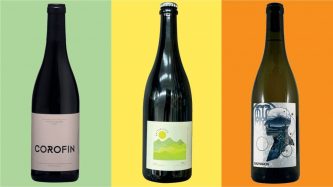
The business of winemaking can be, well, a little dry. Especially if what you are looking for is just something good to drink. But the truth is, who owns and does what can make a qualitative difference to what ends up in your glass.
My first job in wine was in a shop that proudly only sold “estate bottled” wine, which meant that all of the wines were made by the same people who grew the grapes. The alternative is probably best described by the French term négociant winemaking, where wine is made with grapes grown by someone else.
In the old world (Europe), a lot is made of the difference between these two models, and despite winemaking being the endpoint of both, they are – for legal and taxation purposes – recognised as different types of businesses.
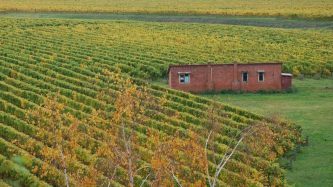
In terms of quality, the general consensus is that wines made by the people who grow the grapes on their own land are better. It makes sense; the farmer who is also the winemaker is invested in the final product from start to end, they understand best how the quality of the fruit they grow determines the quality of the wine they make.
It is also a fair assumption that the grape grower and the négociant winemaker might have conflicting financial motivations that don’t add up to better wine. Beyond this simple idea of quality control, there is also a sense in which an “estate bottled” wine is a unique expression of the specific place and people that it came from, in a way that wine made from purchased grapes won’t be.
In Aotearoa, there is less focus on the difference between these two models of how wine gets made. That is probably to do with small artisan farmer-producers, including winemakers, cheesemakers, and other producers, not historically had the same status here as in Europe.
It is also the case that our winemaking history is simply shorter, and so it makes sense that we’ve looked for trusted brands and flavour profiles, rather than focused on place and tradition as markers of quality, as those places and their traditions are still being established.
What’s more, the accessibility of vineyards and winemaking facilities is not the same here as in the Old World. Where in parts of Europe, forgotten or neglected wine regions have provided an opportunity for young adventurous winemakers to establish themselves at a relatively low cost, here the cost of land and plant can act as a prohibitive barrier to entry.
Kiwis motivated to make delicious and interesting wines under their own labels have however found another way and in doing so, are changing the way we think about négociant winemaking.
Corofin
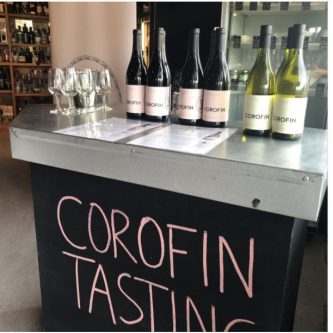
Mike and Anna Paterson of Corofin in Marlborough, like the other producers featured here, have neither a winery nor vineyards. Perhaps counterintuitively, it is precisely this lack of a stake in a vineyard that is fundamental to them making wines that are uniquely connected to the sites they come from.
Corofin works mainly with Pinot Noir, with a little chardonnay, and each of their wines come from single sites, small corners of vineyards, all located in the foothills of the southern valleys of Marlborough. Their approach to winemaking is to dial back fruit character and varietal expression, believing that more reserved, savoury wines show better the differences made by the specific geography and geology of the vineyard sites that they want to promote.
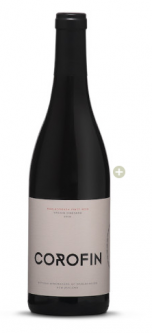
This model for making site-specific wines is reflective of the best parts of the négociant model in Burgundy, where law and tradition codify the unique nature of specific parcels of land, and farmers and négociant-winemakers are left to focus on their part in allowing those places to best reflect themselves.
The Patersons go a step further by promoting not just the physical growing conditions of their chosen vineyards, but also the family winegrowers who farm those sites. Not only are they in this sense advocates for the most interesting places to grow grapes in their region, they also shine a light on growers who are committed to best quality farming practices.
The best Corofin recommendation I can give you is to take the opportunity to taste each of the site-specific Pinots of a given vintage. The differences between each of the wines tell the story of those unique sites. A fascinating and delicious exercise.
This particular one from the meticulously farmed Wrekin vineyard is bold, savoury and concentrated, reflective of the relatively low yields taken from the site.
A Thousand Gods
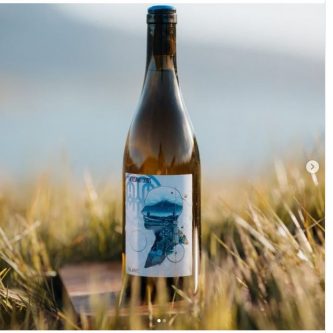
Lauren and Simon Sharpe’s story is increasingly familiar. New Zealanders who spent a significant part of their lives and careers learning their craft overseas, in their case France, returning with their young family to put those skills to use in their homeland.
Of course, a return home can be challenging for a number of reasons, not least of which is the cost of starting afresh and wanting to establish your own business.
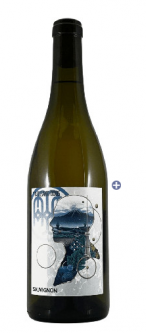
The opportunity to purchase fruit from Churton vineyard in Marlborough, one of the best growers and vineyard sites in the country, and to lease space in a shared winemaking facility, meant that the Sharpes were able to establish their label A Thousand Gods relatively quickly after their return, and without the prohibitive capital outlay of purchasing a vineyard, or the lead-time of planting one according to their no doubt exacting standards.
Which is all the better for us, as already their wines are some of the most thoughtful, interesting and delicious in the market.
Being able to get their label underway has also allowed them the time and resources for what is next, which is establishing their own small winemaking facility, opening up further opportunities to experiment and show off their well-honed craft.
Sauvignon blanc, but not as we know it. A precise balance of texture, perfumed aromatics, and just right acidity that adds up to a glass I just can’t put down.
Bryterlater
Some of the freshest and most interesting new New Zealand wines are being made under labels that are a side-hustle for their talented producers.
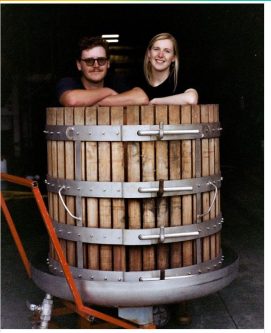
Ambitious young winemakers, such as Bryterlater’s James Graves Opie, are holding down demanding viticultural and winemaking jobs and making their own wine on the side. Connections made in the industry through their ‘day jobs’ provide access to both information about where to source the best fruit, as well as access to expensive equipment and unused space, not to mention a network of seasoned professionals willing to lend advice and the odd hand where needed.
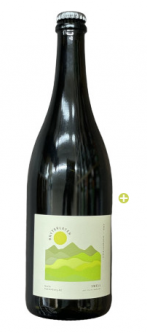
Opie, situated in North Canterbury, sources premium organic fruit from local growers, and with it is crafting some impressive wines. His work with Sauvignon Blanc, especially in his sparkling wines, show new and delicious sides to a varietal many of us may have tired of.
I believe it’s partly the freedom of financial pressure associated with buying land equipment that gives Opie’s approach an air of experimentation, trial and error, and ambition. Like an increasing number of similarly minded winemakers, he’s not letting the absence of his own vineyard and winery stop him from producing his own wines.
The result is more exciting wines to drink, which is always a good thing.
Yeasty creamy texture and fine bubbles in this delicate sparkler are complemented by gentle pear flavours, all of which offset the shouty fruit-forward character normally associated with sauvignon blanc. Really impressive, and super refreshing.


